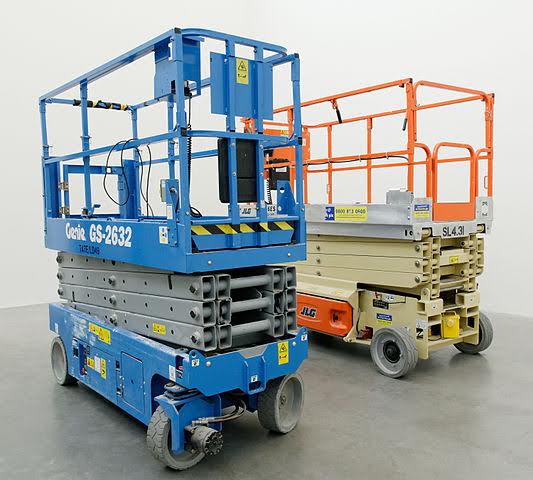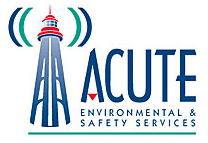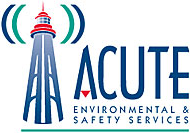Aerial Lift Training Requirements Ontario

scissor lift image source: Peter Burka on flickr.com
Wondering if you need or would benefit from aerial lift training? Aerial lifts may also be referred to as elevating work platforms or mobile elevating equipment. Aerial lifts include machinery such as scissor lifts, boom lifts, bucket-trucks, cherry pickers, and other mobile elevating equipment. This article will go over what aerial lift training is, who requires aerial lift training in Ontario, and what aerial lift training looks like. Do you have more questions about aerial lift training or health & safety training in Ontario? Contact the experts at ACUTE today and we’ll be happy to help!
Looking for training courses?
What Is Aerial Lift Training?
An aerial lift training course will teach participants how to safely operate various types of aerial lifts. There are different types of aerial lifts. Depending on your workplace and training requirements, you may receive training for all or just some of the various types of aerial lifts. For example, ACUTE offers Elevating Work Platform training. Within this training, you may choose to take the Scissor & Boom course, or just the Scissor training course.
Aerial lift training provides participants with the knowledge and practical know-how to safely use and operate aerial lifts. Aerial lift training is a form of working at heights training, as you will be working at heights while on aerial lift devices. However, it is not a replacement for working at heights training. It does not replace the required Working At Heights training course for those working on construction projects.
Check out the video below for an example of what scissor & boom lift training looks like.
Who Needs Aerial Lift Training?
Aerial lift training is typically required for those working in warehouses or on construction projects. However, no matter what industry, anyone using aerial lifts/elevating work platforms must be properly trained before using machinery. Employers must ensure that workers are adequately trained. Improper use of aerial lifts can result in serious or fatal injuries. Don’t wait. Sign up for training today to ensure the safety of everyone involved in your workplace.
For Construction
The Ontario Ministry of Labour, Immigration, Training and Skills Development outlines general duties for those working on construction projects and using aerial lift machinery.
As noted on the Ontario Ministry of Labour, Immigration, Training and Skills Development’s page on Elevating Work Platforms in Construction, employers are obligated under the Occupational Health and Safety Act (OHSA) and the Construction Projects Regulation to do the following:
- Employers must ensure workers receive proper training in the use of fall protection systems at Ontario construction sites
[O. Reg. 213/91, section 26.2]
- Employers must ensure a competent person is appointed as supervisor [OHSA clause 25(2)(c)]
- Employers must take every precaution reasonable for the protection of the workers [OHSA clause 25(2)(h)]
(Source)
Aerial Lift Training Requirements Ontario – Construction Projects

As most construction projects will at some point use aerial lift machinery, there are many rules and regulations about the proper use of elevating work platforms for construction projects. There are many obligations under the OHSA and the Construction Projects Regulation in regards to elevating work platforms.
Obligations under the OHSA and the Construction Projects Regulation
Obligations surrounding the use of elevating work platforms (EWP) include:
- The EWP must not be excessively loaded beyond its rated working load
- The EWP must be placed on a firm and level surface
- The EWP must only be operated in accordance with the written instructions provided by the manufacturer
- The EWP shall not be loaded or used in a way that will affect its stability or endanger any worker
- The EWP shall not be moved unless all workers on it are protected from ejection by being attached to an adequate anchorage point on the elevating work platform by a method of fall protection
(source)
There are many other rules and regulations under the OHSA and the Construction Projects Regulation regarding the general safe use and inspection of elevated work platforms. Some of these regulations include:
- The operating manual must always be kept with the elevating work platform [O. Reg. 213/91, section 149]
- The elevating work platform must be used in accordance with the operating manual [O. Reg. 213/91, section 148]
- A trained worker must inspect the EWP on a daily basis [O. Reg. 213/91, clause 144(3)(b)]
- Workers must be aware of all of the written emergency procedures that are in place (required to be established by the constructor) in the event of an accident [O. Reg. 213/91, section 17]
- Workers must be made aware of who is in charge of the operation. Is it their supervisor? A “competent person?” [O. Reg. 21391, section 14]
For a full list of obligations and regulations, see the MLITSD list here.
Aerial Lift Training Toronto

Unfortunately, accidents can happen anywhere. Receiving proper training in your area can help prevent serious or fatal accidents. Recently Northumberland News reported that a young construction worker was airlifted to Toronto from Port Hope when the skyjack he was working on collapsed. Police and Ministry of Labour, Immigration, Training and Skills Development investigators quickly attended the scene.
In May 2015, one worker was killed and another seriously injured when a scissor lift tipped over at a Markham industrial site, National Post reported. Both police officers and Ministry of Labour, Immigration, Training and Skills Development investigated the scene. In August 2016, a 60-year-old worker was killed in a scissor lift accident at a warehouse, CP24 News reported.
These local incidents show accidents can happen to anyone, regardless of age, experience, and workplace. Receiving proper hands-on, industry-tailored training is important for everyone and anyone who will be using any aerial lift machinery.
Aerial Lift Training: Online VS Hands-On Training

Some aerial lift training courses can be taken online. Online training is appealing as it is often less expensive and can be completed from the comfort of your own home.
These online courses comply with government legislation and provide much-needed theory training. However, online training can only provide theory. Many workplaces require practical, hands-on training specific to the workplace. Many workplaces will not allow workers to use EWPs unless they receive both theory and practical training.
Online training alone cannot prepare a worker for real-life dangerous situations. Online training has also been repeatedly shown to provide a lower quality of translatable experience. It also makes it harder for workers to retain the information they learn. Even if you feel your industry or workplace does not need industry-tailored training, you should think again! Having relevant and tailored training helps workers apply what they learn immediately. It also ensures workers practice proper safety techniques from the very beginning.
Overall, online training may seem like the best option. However, it is likely that online training alone is not enough, and you may end up needing to take an in-person training course that goes over theory all over again! It’s best to sign-up for an in-person EWP course from the get-go.
Get Hands-On Training Now!
ACUTE helps organizations understand their training challenges while also providing unparalleled tailoring and customer service. Here are just a few things you can expect when training with ACUTE:

- Open Door Instructor-Student Partnership – ACUTE’s training services emphasize client participation. Staff want to build relationships with clients and serve as a touchstone for advice anytime moving forward.
- Serving Your Team and Industry – With a vast array of clients in manufacturing, construction, health, academic, and government agencies, ACUTE brings the best safety practices from across the spectrum to your workplace.
- 100 Years Combined Experience – ACUTE provides comprehensive health and safety training, on-site safety services, and consulting services. With over 100 years of combined experience, our staff offer more than theoretical or abstract ideas. ACUTE offers solutions.
- Track Record of Success – ACUTE is rated 4.9/5 stars on Google reviews, demonstrating a commitment to our clients, quality, and passion for training.
ACUTE is located in Waterloo, Ontario and services customers from the cities such as Toronto, Mississauga, Brampton, Hamilton, Milton, Kitchener, London, Guelph, and other cities from across Ontario.
“We have used Acute Environmental & Safety Services Inc. for many years and our personnel always come back well trained, energized and bringing lots of ideas. They are provided with substantial and in-depth knowledge together with challenging opportunities to put into practice what they have learned into our field operations.”
– Dante, Environmental Service Company – Read More Testimonials Here!

